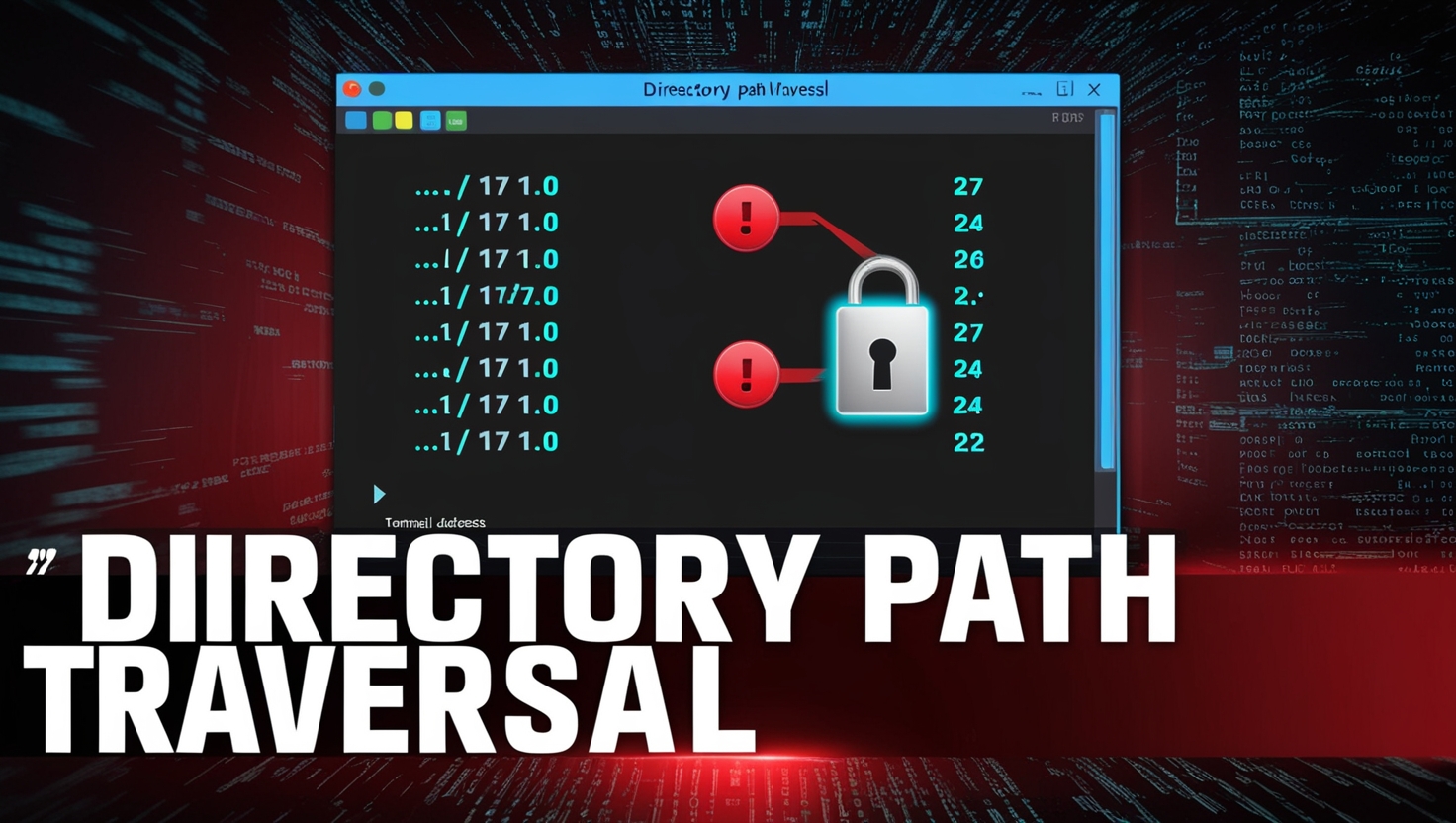1. What is Directory Path Traversal?
Directory Path Traversal, often called simply path traversal, is a type of web security vulnerability that allows attackers to access files and directories stored outside the intended web root folder. This security flaw arises when applications fail to properly sanitize user-supplied input used in file paths.
In simple terms, an attacker manipulates file paths to “traverse” the file system of a server and gain access to sensitive files such as password lists, configuration files, or logs. The focus keyword directory path traversal is commonly associated with high-severity bugs that expose sensitive server-side information.
2. How Directory Path Traversal Works
Directory Path Traversal attacks exploit improper validation of user input in file or directory requests. Let’s say a web application lets users download invoices like this:
https://example.com/download?file=invoice.pdfA vulnerable application might allow attackers to modify the file parameter:
https://example.com/download?file=../../../../etc/passwdThis input tricks the server into navigating up the directory structure and accessing restricted files. Variations include encoding tricks like:
..%2f..%2f..%2fetc%2fpasswdThese attacks leverage the lack of input validation and the trust the application places on user input.
3. Real-World Examples of Directory Path Traversal Attacks
- Apache Tomcat (CVE-2007-0450): Allowed attackers to access files outside the webroot using crafted URLs.
- Fortinet FortiWeb (CVE-2021-32589): Exploitable by manipulating a
downloadparameter, giving unauthorized access to arbitrary files. - Magento (CVE-2015-1397): Attackers could access sensitive files on the server by exploiting path traversal bugs in file upload modules.
These examples highlight how the directory path traversal vulnerability can be devastating in real-world applications.
4. Common Vulnerable Code Patterns
Several languages and frameworks are prone to path traversal vulnerabilities if user input isn’t properly handled. Here are some examples:
PHP Example:
$file = $_GET['file'];
include("files/" . $file);Node.js Example:
app.get('/read', function(req, res) {
let filepath = './docs/' + req.query.filename;
res.sendFile(filepath);
});Python Flask Example:
@app.route('/view')
def view():
filename = request.args.get('file')
return send_file("./data/" + filename)These snippets are vulnerable to directory path traversal because they directly concatenate user input with file paths without any checks.
5. How to Test for Directory Traversal
Security testers and ethical hackers use both manual and automated methods to test for directory path traversal:
Manual Testing:
- Use payloads like
../,..\, or encoded versions like%2e%2e%2f. - Observe server responses for access-denied or file content errors.
Tools:
- Burp Suite: Intercept requests and modify parameters.
- Nikto: Scans for path traversal and other web vulnerabilities.
- OWASP ZAP: Useful for fuzzing and automated scanning.
By testing these vectors, security teams can find and fix directory path traversal issues before attackers do.
6. How to Prevent Directory Path Traversal Attacks
To mitigate directory path traversal vulnerabilities, developers should follow these practices:
- Input Validation: Whitelist allowed file names or types.
- Avoid User-Controlled Paths: Don’t use direct user input in file paths.
- Use Built-in APIs: Functions like
realpath()or libraries that handle path resolution securely. - Chroot or Sandboxing: Restrict the accessible portion of the filesystem.
Example (PHP):
$filename = basename($_GET['file']);Example (Python):
import os
os.path.abspath(os.path.join('/safe/dir', filename))7. Why Directory Path Traversal is Dangerous
The danger lies in the unauthorized access to sensitive files. A successful directory path traversal attack can:
- Expose user credentials.
- Leak configuration and environment files.
- Reveal source code or internal APIs.
- Lead to privilege escalation or remote code execution.
In worst cases, it becomes the first step in a multi-stage attack that compromises an entire system.
8. Defense in Depth: Secure Coding Practices
Even with input validation, extra layers of defense reduce risk:
- Least Privilege Principle: Limit file access permissions.
- Logging and Monitoring: Detect unusual file access patterns.
- Use Frameworks Wisely: Many modern frameworks have secure functions — use them instead of reinventing the wheel.
Security is not about a single defense mechanism but a layered approach.
9. Directory Traversal in CTFs and Bug Bounties
Directory path traversal is a popular vulnerability in Capture The Flag (CTF) competitions. These challenges often involve uncovering flags hidden deep within directories using crafted payloads.
In the bug bounty world, directory path traversal often appears in reports where APIs or file download endpoints are not securely implemented. Ethical hackers exploit these to read server logs, .env files, or backup databases.
10. Conclusion: Staying Ahead of Path Traversal Vulnerabilities
Directory path traversal is a common yet powerful vulnerability. By understanding how it works and how attackers exploit it, developers and security professionals can implement better safeguards.
Ensure your input validation is robust, leverage secure coding practices, and routinely test your applications. With vigilance, directory path traversal vulnerabilities can be effectively mitigated, keeping your applications and users safe.
Whether you’re trying to improve your own site’s SEO or looking to earn passive income promoting a top-tier service, Monkey Digital’s Unbeatable SEO is a win-win.
🔗 Check it out now: https://www.monkeydigital.org/unbeatable-seo/
💸 Start earning commissions: [https://www.monkeydigital.org/unbeatable-seo/?ref=108276]

Leave a Reply